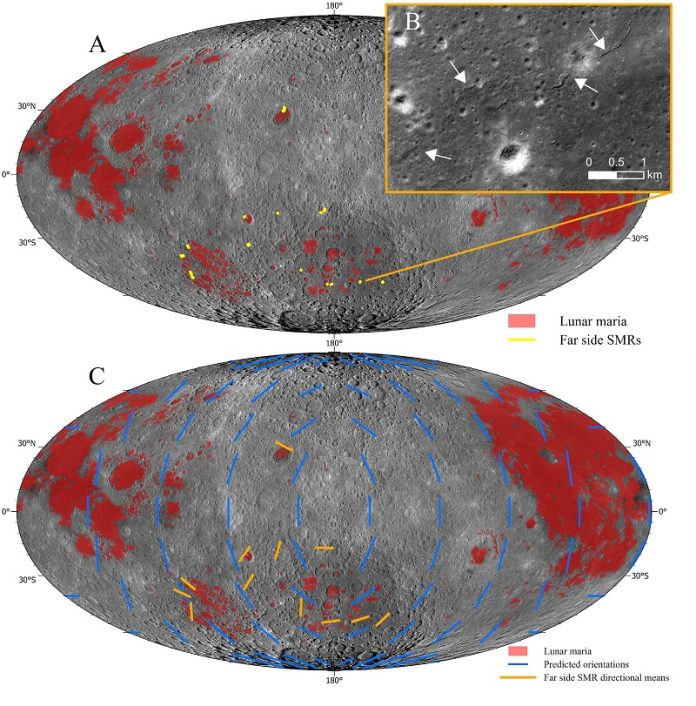
For a long time, scientists believed that the Moon had been geologically dead for billions of years, meaning that all major geological changes stopped long ago.
However, a new study suggests that the Moon is still experiencing movement beneath its surface, making it more active than we previously thought.
Scientists have spent decades studying the Moon’s surface to understand its history.
The lunar maria—the dark, flat areas formed by ancient lava—showed evidence that the Moon shrank and contracted billions of years ago.
Scientists believed that these changes created large ridges on the Moon’s near side, and that the geological activity stopped long ago.
However, a recent study, published on January 21, 2025, in The Planetary Science Journal, suggests otherwise.
A team of researchers from the Smithsonian Institution and the University of Maryland (UMD) discovered that some ridges on the Moon’s far side are much younger than those on the near side.
Jaclyn Clark, a research scientist at UMD, explained:
“Many scientists believed that the Moon’s major geological activity stopped around three billion years ago. But our study shows that some landforms have been active in the last 200 million years—which is very recent when considering the Moon’s long history.”
The team used advanced mapping and computer models to identify 266 previously unknown small ridges on the Moon’s far side. These ridges were found in volcanic areas that formed 3.2 to 3.6 billion years ago, but the ridges themselves are much younger.
To estimate the age of these features, the researchers used a method called crater counting. The idea is simple: the older a surface is, the more craters it will have, because it has been exposed to impacts from space for a longer time.
“When we counted craters around these ridges, we found that some ridges were cutting through existing craters, meaning they formed later. This suggests that tectonic activity has happened in the last 160 million years,” Clark explained.
The newly discovered ridges are similar to those on the Moon’s near side, suggesting that both were shaped by the same forces. Scientists believe these movements could be caused by:
- The Moon slowly shrinking over time.
- Changes in the Moon’s orbit around Earth.
- Moonquakes, which were first detected by Apollo missions.
Understanding the Moon’s geological activity is important for future space missions. If the Moon is still shifting and experiencing quakes, this could affect where astronauts land, where equipment is placed, and how future Moon bases are built.
“We hope future Moon missions will include tools like ground-penetrating radar to study what’s happening beneath the surface,” said Clark.
This discovery shows that the Moon is not as lifeless as we once thought—and there is still much more to learn about Earth’s closest neighbor.



